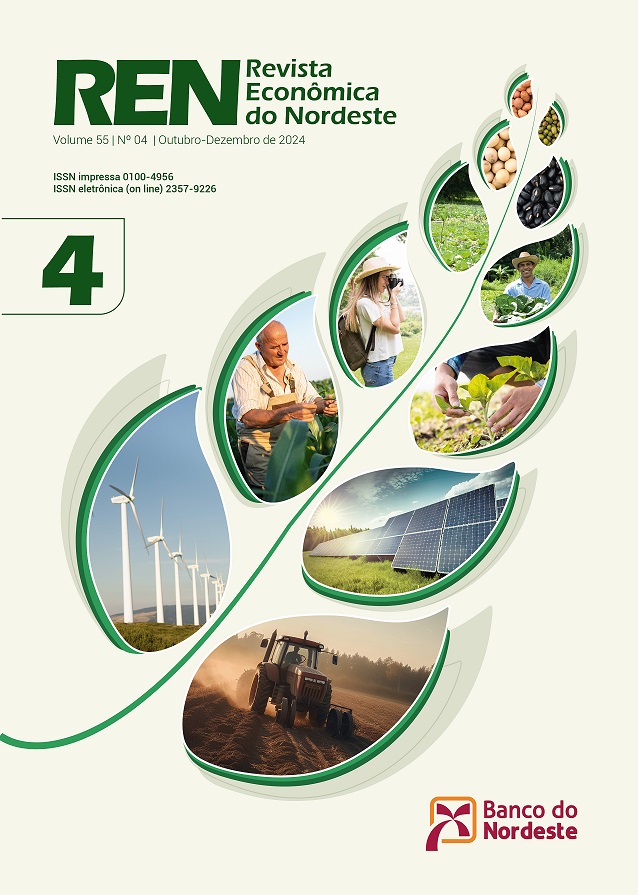SUSTAINABLE RURAL DEVELOPMENT: AN ASSESSMENT OF BRAZILIAN MICROREGIONS
DOI:
https://doi.org/10.61673/ren.2024.1570Keywords:
Sustainability, Factor analysis, Composite inde, Rural spaceAbstract
This article, based on a discussion about rural space, its specificities and importance, describes the construction of a Sustainable Rural Development Index (IDRS) for Brazilian geographic microregions. Through applied, explanatory, quantitative research, variables were determined based on the selection of recent studies and indicators related to the Sustainable Development Goals of the 2030 Agenda. The statistical tool Factor Analysis was used to construct the IDRS. Worrying sustainable development levels were identified for Brazilian micro-regions, at a national level. However, it is also possible to identify that there is a much higher concentration of low levels of IDRS in large regions such as the North and Northeast, in contrast to the concentration of high levels in the Brazilian South and Southeast. This is because geographic proximity influences not only customs, social organization and economic activity, but also brings climatic and geographic similarities that, together, directly impact the development of a region.Downloads
Download data is not yet available.
Downloads
Published
2024-10-31
How to Cite
Ferreira, A. L., Branchi, B. A., & Oliveira, F. C. R. de. (2024). SUSTAINABLE RURAL DEVELOPMENT: AN ASSESSMENT OF BRAZILIAN MICROREGIONS. Revista Econômica Do Nordeste, 55(4), 8–29. https://doi.org/10.61673/ren.2024.1570
Issue
Section
Artigos
License
Copyright (c) 2023 Revista Econômica do Nordeste

This work is licensed under a Creative Commons Attribution 4.0 International License.








